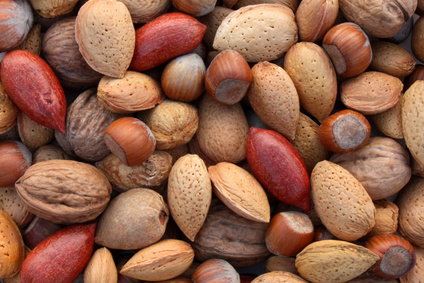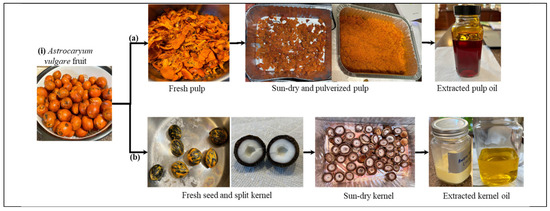A Bounty of Oil: Exploring the Oleaginous Fruit Gems of Australia
A Bounty of Oil: Exploring the Oleaginous Fruit Gems of Australia

Australia, a land of vast landscapes and diverse ecosystems, boasts a rich tapestry of native flora. Among this botanical treasure trove are a unique group of fruits known as oleaginous fruits. These remarkable fruits are characterized by their high oil content, offering a delicious and nutritious source of energy and essential fatty acids.
This article delves into the world of Australian oleaginous fruits, exploring their fascinating history, nutritional benefits, culinary uses, and the exciting potential they hold for the future.
Related Articles: A Bounty of Oil: Exploring the Oleaginous Fruit Gems of Australia
- The Iconic Aussie Icons: Unveiling The Uniquely Australian Trees
- The Buzz About Bees: Why These Tiny Creatures Are Vital To Our Ecosystem
- Unveiling The Power And Beauty: A Journey Into Aboriginal Face Masks Of Australia
- A Taste Of The Tropics: Exploring Australia’s Diverse Fruit Bounty
- Embracing Tradition: A Guide To Beautiful Aboriginal Girl Names
Understanding Oleaginous Fruits: A Nutritional Powerhouse
Oleaginous fruits, derived from the Latin word "oleum" meaning oil, are fruits that contain a significant amount of oil within their flesh, seeds, or kernels. These oils are often rich in monounsaturated and polyunsaturated fatty acids, vital for maintaining heart health, reducing inflammation, and supporting overall well-being.
Beyond their nutritional value, oleaginous fruits offer a unique flavor profile and textural diversity, adding a distinct dimension to culinary creations. They can be enjoyed fresh, dried, or processed into oils, butters, and other culinary delights.
A Journey Through Australia’s Oleaginous Fruit Landscape
Australia is home to a diverse array of oleaginous fruits, each with its own unique characteristics and culinary applications. Here’s a glimpse into some of the most prominent contenders:
1. Macadamia:
The iconic macadamia nut, native to the subtropical rainforests of Queensland, is a true Australian treasure. Its creamy, buttery flavor and high oil content have made it a global favorite. The macadamia nut oil, extracted from the kernels, is prized for its high levels of monounsaturated fats, making it a heart-healthy choice.
2. Quandong:

This vibrant red fruit, found in the arid regions of central Australia, is a true testament to the resilience of nature. Its sweet, tangy flavor and high oil content make it a delicious and nutritious addition to desserts, jams, and sauces. Quandong oil is known for its potential anti-inflammatory properties.
3. Kakadu Plum:
Growing wild in the northern territories, the Kakadu plum is a small, yellow fruit with an incredibly high vitamin C content, surpassing even oranges. Its seeds contain a valuable oil rich in oleic acid, a monounsaturated fatty acid known for its heart-protective benefits.
4. Finger Lime:
This unique citrus fruit, native to the rainforests of Queensland, is known for its distinctive "finger" shape and its juicy, caviar-like pearls. The oil extracted from the seeds is rich in antioxidants and is said to possess anti-aging properties.

5. Davidson Plum:
Found in the rainforests of northeastern Australia, the Davidson plum is a small, dark purple fruit with a tart, tangy flavor. Its seeds contain a high oil content, rich in omega-3 fatty acids, known for their brain-boosting and anti-inflammatory properties.
6. Bush Tomato:
This small, red fruit, found in the arid regions of Australia, has a unique, tangy flavor reminiscent of tomatoes. Its seeds contain a valuable oil rich in linoleic acid, an essential fatty acid that plays a crucial role in cell growth and development.
7. Illawarra Plum:

This small, purple fruit, native to the rainforests of New South Wales, has a sweet, tangy flavor with hints of citrus. Its seeds contain a high oil content, rich in oleic acid, known for its heart-protective benefits.
8. Native Peach:
This small, yellow fruit, found in the arid regions of Australia, has a sweet, juicy flavor with a hint of almond. Its seeds contain a valuable oil rich in palmitic acid, a saturated fatty acid known for its skin-moisturizing properties.
9. Desert Lime:
This small, green fruit, found in the arid regions of Australia, has a tangy, citrusy flavor. Its seeds contain a valuable oil rich in limonene, a natural compound known for its antibacterial and antifungal properties.
The Culinary Potential of Australian Oleaginous Fruits
The culinary uses of Australian oleaginous fruits are as diverse as the fruits themselves. Their unique flavors and textures lend themselves to a wide range of applications, from traditional bush tucker dishes to modern gourmet creations.
1. Fresh Consumption:
Many oleaginous fruits can be enjoyed fresh, offering a burst of flavor and a satisfying crunch. Macadamia nuts, quandong, and finger limes are excellent examples of fruits that can be enjoyed fresh.
2. Dried Fruits:
Drying oleaginous fruits enhances their flavor and extends their shelf life. Dried quandong, kakadu plum, and bush tomato are popular choices for snacks and baking.
3. Oils and Butters:
Extracting oils and butters from oleaginous fruits unlocks their unique flavor profiles and nutritional benefits. Macadamia nut oil, quandong oil, and kakadu plum oil are prized for their culinary and health benefits.
4. Jams and Sauces:
The tart and tangy flavors of oleaginous fruits like quandong, Davidson plum, and bush tomato make them ideal for creating delicious jams and sauces.
5. Baking and Confectionery:
The richness and flavor of oleaginous fruits add a unique dimension to baking and confectionery. Macadamia nuts, quandong, and finger limes are popular additions to cakes, cookies, and chocolates.
6. Bush Tucker Dishes:
Traditional Aboriginal cultures have long incorporated oleaginous fruits into their diets. Quandong, bush tomato, and native peach are key ingredients in many bush tucker dishes.
The Future of Australian Oleaginous Fruits
The future of Australian oleaginous fruits is bright. Their unique flavor profiles, nutritional value, and culinary versatility are attracting growing interest from chefs, food producers, and consumers alike.
1. Sustainable Agriculture:
The increasing demand for oleaginous fruits is driving the development of sustainable agricultural practices, ensuring the long-term viability of these valuable resources.
2. Innovation and Research:
Ongoing research is exploring new ways to cultivate, process, and utilize oleaginous fruits, unlocking their full potential for culinary and medicinal applications.
3. Global Market Expansion:
The growing popularity of Australian oleaginous fruits is leading to increased exports, introducing these unique ingredients to a wider global audience.
4. Health and Wellness:
The nutritional benefits of oleaginous fruits are increasingly recognized, making them a valuable addition to a healthy diet.
5. Culinary Creativity:
Chefs and food producers are constantly exploring new and innovative ways to incorporate oleaginous fruits into their creations, pushing the boundaries of culinary artistry.
FAQ about Oleaginous Fruits in Australia:
Q: What are the most common oleaginous fruits in Australia?
A: Some of the most common oleaginous fruits in Australia include macadamia, quandong, kakadu plum, finger lime, Davidson plum, bush tomato, Illawarra plum, native peach, and desert lime.
Q: What are the health benefits of consuming oleaginous fruits?
A: Oleaginous fruits are rich in healthy fats, antioxidants, vitamins, and minerals, offering numerous health benefits, including heart health, reduced inflammation, improved brain function, and boosted immunity.
Q: Where can I find oleaginous fruits in Australia?
A: Oleaginous fruits are available in a variety of places, including specialty food stores, farmers markets, and online retailers. You can also find them in some supermarkets, particularly in regions where they are grown.
Q: How can I incorporate oleaginous fruits into my diet?
A: There are many ways to enjoy oleaginous fruits. You can eat them fresh, dried, or processed into oils, butters, jams, sauces, and other culinary delights. They also make a great addition to baking and confectionery.
Q: Are oleaginous fruits sustainable?
A: Many oleaginous fruits are native to Australia and are considered sustainable crops. However, it’s important to choose products that are sourced ethically and sustainably.
Q: What are the future prospects for oleaginous fruits in Australia?
A: The future of oleaginous fruits in Australia is bright. Their unique flavor profiles, nutritional value, and culinary versatility are attracting growing interest from chefs, food producers, and consumers alike. The demand for these fruits is expected to continue to grow, leading to increased production, innovation, and global market expansion.
This exploration into the world of Australian oleaginous fruits reveals a fascinating story of culinary treasures, nutritional powerhouses, and sustainable practices. As awareness of these unique fruits continues to grow, they are poised to play an increasingly prominent role in Australian cuisine and beyond.

Closure
Thus, we hope this article has provided valuable insights into A Bounty of Oil: Exploring the Oleaginous Fruit Gems of Australia. We hope you find this article informative and beneficial. See you in our next article!


